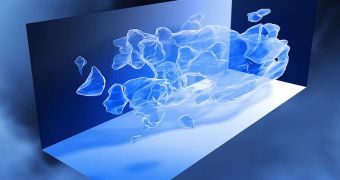Scientists in the United States recently provided the first confirmation that an European collaboration of physicists actually saw particles thought to make up dark matter in a long-term experiment.
The American team, based in an abandoned iron mine in Minnesota, operates a germanium-based detector, which seeks to assess the frequency of interactions between the chemical and weakly interacting massive particles (WIMP), the basic components of dark matter.
These particles have been proposed as the main constituents of the elusive stuff for many years, but discovering them in reality has proven to be a very difficult task. Some time ago, the DAMA/LIBRA research group, in Italy, said that it found the first signs of WIMP.
But the findings were heavily criticized and disputed in the international scientific community, primarily because the original study took 13 years to complete, and because of the controversial nature of the topic at hand.
But the COGENT experiment may have now provided the first experimental verification of the DAMA/LIBRA discovery, Science News reports. The new data were collected during 15 months of observations, the American team explains.
Finding and studying dark matter is essential for astrophysicists, whose models of how the Universe is set up are heavily dependent on the characteristics and the existence of the stuff. It is believed that it interact with regular matter solely through gravitational interactions.
In addition, WIMP are thought to be their own antiparticles. This means that, when two such particles meet, they annihilate each other, and release energy. Dark matter does not interact with normal matter directly, and so conventional detectors cannot be used to see it.
In the DAMA/LIBRA study, experts saw a seasonal variation developing in the rate of collisions between the detector and particles coming in from the surface. This variation saw higher counts in the summer, and more reduced ones during the winter.
The way the European team interpreted this was that Earth was moving through a cloud of WIMP, which varied in density. The COGENT team detected a similar variation following its 15-month study, Science News reports.
The new results are “something pretty similar to what DAMA has seen. Everything that you would hope would be there, if it’s dark matter, is basically there,” explains Fermi National Accelerator Laboratory theorist Dan Hooper.
He attended the latest meeting of the American Physical Society, which was held in Anaheim, California, on May 2. University of Chicago professor and COGENT team leader Juan Collar presented his team's findings at the conference.

 14 DAY TRIAL //
14 DAY TRIAL //